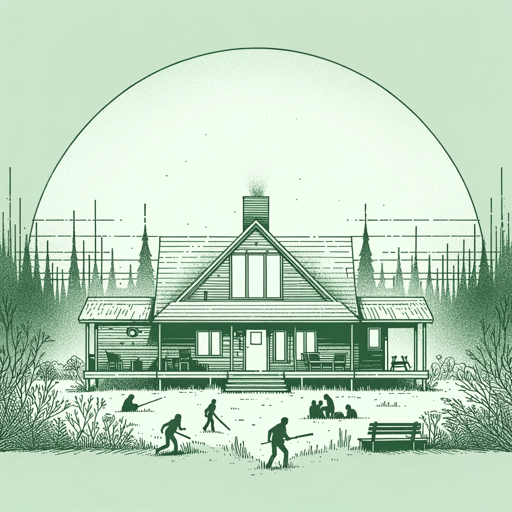45 pages • 1 hour read
Paul TremblayThe Cabin at the End of the World
Fiction | Novel | Adult | Published in 2018A modern alternative to SparkNotes and CliffsNotes, SuperSummary offers high-quality Study Guides with detailed chapter summaries and analysis of major themes, characters, and more.
Important Quotes
“The girl with the dark hair walks down the wooden front stairs and lowers herself into the yellowing lagoon of ankle-high grass. A warm breeze ripples through the blades, leaves, and crablike petals of clover flowers.”
(Part 1, Chapter 1, Page 11)
The novel’s opening lines introduce seven-year-old Wen as she plays alone. Tremblay emphasizes the idyllic natural setting of the cabin, as well as Wen’s innocence. By presenting this serene scenario, the author sets the stage for the violence that will soon disrupt Wen’s world and prompt her loss of innocence. The passage intentionally evokes the beginning of William Golding’s novel Lord of the Flies, which likewise explores violence, corruption, and the loss of childhood innocence.
“This man’s smile is warm and wide. His face opens its curtains naturally. Wen can’t fully describe the difference between a real smile and a fake one, but she knows it when she sees it. He is not faking.”
(Part 1, Chapter 1, Page 15)
The novel describes Leonard’s character through Wen’s narrative perspective. Wen instinctively trusts the stranger, assessing his manner and smile as authentic—unlike those of many adults she has encountered. Her viewpoint presents Leonard in a favorable light and illustrates his persuasive powers as the leader of a cultlike group.
“Redmond might as well be a cipher, a stand-in, a representative for all of them: good ole boys, frat boys, card-carrying members of the old boys’ network, hate-the-sin-love-the-sinner God-fearin’ boys; they’re all of the same species.”
(Part 1, Chapter 2, Page 54)
Andrew’s initial impression of Redmond is that he typifies the many bigoted men Andrew has encountered during a lifetime of antigay prejudice. After Redmond’s death, Andrew becomes convinced he was O’Bannon, the man who attacked him in a bar years earlier. Tremblay maintains ambiguity surrounding Redmond’s identity throughout the text about whether he was O’Bannon or simply a “cipher” for Andrew’s traumatic experience in the bar.
Featured Collections
Books Made into Movies
View Collection
Fate
View Collection
Fear
View Collection
Good & Evil
View Collection
Horror, Thrillers, & Suspense
View Collection
Safety & Danger
View Collection
The Best of "Best Book" Lists
View Collection
Trust & Doubt
View Collection
Truth & Lies
View Collection
YA Horror, Thrillers, & Suspense
View Collection

